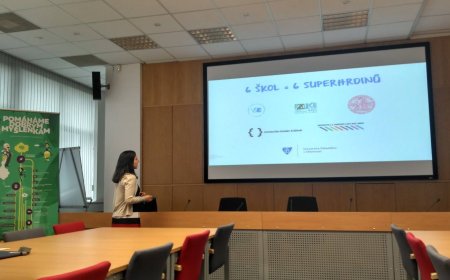Comprehensive Guide to Business Consulting Frameworks
Comprehensive Guide to Business Consulting Frameworks In the dynamic and ever-evolving world of business, organizations often seek the expertise of

Comprehensive Guide to Business Consulting Frameworks
In the dynamic and ever-evolving world of business, organizations often seek the expertise of professional consultants to help them navigate complex challenges, identify growth opportunities, and optimize their operations. One of the key tools in a consultant's arsenal is the use of well-established business consulting frameworks – structured approaches that provide a systematic way to analyze, diagnose, and address a wide range of business issues.
In this comprehensive guide, we will delve into the world of business consulting frameworks, exploring the most widely-used models, their key components, and how they can be effectively applied to drive meaningful and sustainable business transformation. Whether you're a business leader seeking to optimize your organization's performance or an aspiring consultant looking to expand your toolkit, this article will provide you with a deep understanding of the power and versatility of these strategic frameworks.
1. SWOT Analysis
The SWOT (Strengths, Weaknesses, Opportunities, Threats) analysis is one of the most fundamental and widely-used business consulting frameworks. This framework helps organizations assess their internal capabilities and external market conditions, enabling them to develop informed strategies and make data-driven decisions.
Key components of the SWOT analysis:
- Strengths: The internal capabilities, resources, and competitive advantages that an organization possesses and can leverage to achieve its goals.
- Weaknesses: The internal limitations, deficiencies, or areas of improvement that an organization needs to address to enhance its performance.
- Opportunities: The external market trends, industry developments, or untapped potential that an organization can capitalize on to drive growth and expansion.
- Threats: The external factors, such as competition, regulatory changes, or market disruptions, that can pose challenges or risks to an organization's success.
Example case study: A leading healthcare provider used the SWOT analysis to evaluate its position in the market and develop a strategic plan to expand its services. The analysis revealed the organization's strong reputation for quality care and skilled medical professionals (strengths), but also identified the need to improve its digital infrastructure and patient engagement strategies (weaknesses). It also highlighted the growing demand for telehealth services and the potential to partner with technology companies (opportunities), while acknowledging the increasing competition from smaller, specialized clinics (threats). Armed with this comprehensive understanding, the healthcare provider was able to develop a targeted strategy to enhance its digital capabilities, strengthen its patient-centric approach, and differentiate itself in the market.
2. Porter's Five Forces
Developed by renowned economist Michael Porter, the Five Forces framework is a powerful tool for analyzing the competitive landscape of an industry and assessing the potential profitability of a business within that industry.
The five forces that shape industry competition are:
- Threat of new entrants: The ease with which new competitors can enter the market and the barriers to entry, such as economies of scale, capital requirements, or regulatory hurdles.
- Bargaining power of suppliers: The ability of suppliers to influence the prices, quality, or availability of the inputs required by the industry.
- Bargaining power of buyers: The ability of customers to influence the prices, quality, or terms of the products or services they purchase.
- Threat of substitute products or services: The availability and attractiveness of alternative solutions that can meet the same customer needs as the industry's offerings.
- Intensity of competitive rivalry: The level of competition and the degree of differentiation among existing players in the industry.
Example case study: A technology startup in the e-commerce software industry used Porter's Five Forces analysis to assess the viability of its business model. The analysis revealed a relatively low threat of new entrants due to the significant technical expertise and capital required to develop a competitive platform (barrier to entry). However, it also highlighted the high bargaining power of both suppliers (e.g., cloud service providers) and buyers (e.g., large e-commerce enterprises), as well as the threat of substitute products (e.g., custom-built e-commerce solutions). To address these challenges, the startup focused on developing a highly differentiated and feature-rich platform, forged strategic partnerships with key suppliers, and targeted a niche market of small and medium-sized businesses, where the bargaining power of buyers was lower. This comprehensive analysis enabled the startup to refine its strategy and positioning, ultimately leading to its successful growth and acquisition by a larger industry player.
3. McKinsey 7S Framework
The McKinsey 7S framework is a holistic approach to organizational effectiveness, developed by the consulting firm McKinsey & Company. This framework identifies seven interconnected elements that must be aligned for an organization to achieve its desired goals and outcomes.
The seven elements of the McKinsey 7S framework are:
- Strategy: The plan of action designed to achieve the organization's long-term objectives and competitive advantage.
- Structure: The way the organization is organized, including its hierarchy, reporting lines, and decision-making processes.
- Systems: The processes, procedures, and information systems that support the organization's day-to-day operations.
- Shared Values: The core principles, beliefs, and values that guide the organization's culture and the behavior of its employees.
- Skills: The specific capabilities, expertise, and competencies that the organization and its employees possess.
- Style: The leadership approach and management culture that shape the way the organization operates.
- Staff: The people within the organization, including their roles, responsibilities, and level of engagement.
Example case study: A multinational consumer goods company used the McKinsey 7S framework to address organizational challenges and drive a successful transformation. The analysis revealed misalignment between the company's strategy, structure, and systems, as well as a disconnect between its shared values and the actual behavior of its employees. To address these issues, the company implemented a comprehensive change management program that included restructuring the organization, streamlining its processes, fostering a more collaborative and innovative culture, and investing in the development of its workforce. By aligning these seven interconnected elements, the company was able to enhance its operational efficiency, improve its responsiveness to market changes, and deliver better value to its customers, ultimately leading to improved financial performance and market share.
4. Balanced Scorecard
The Balanced Scorecard is a strategic management framework developed by Robert Kaplan and David Norton, which helps organizations align their business activities with their vision and strategy, and monitor performance across multiple dimensions.
The four key perspectives of the Balanced Scorecard are:
- Financial: Measures that track the organization's financial performance and profitability, such as revenue growth, cost reduction, and return on investment.
- Customer: Measures that assess the organization's ability to satisfy and retain customers, such as customer satisfaction, market share, and customer loyalty.
- Internal Business Processes: Measures that evaluate the efficiency and effectiveness of the organization's internal operations, such as process quality, cycle time, and productivity.
- Learning and Growth: Measures that track the organization's ability to innovate, adapt, and improve, such as employee satisfaction, training and development, and technological capabilities.
Example case study: A healthcare organization used the Balanced Scorecard framework to improve its overall performance and patient outcomes. The financial perspective focused on reducing costs and increasing revenue through efficient resource allocation and revenue cycle management. The customer perspective emphasized improving patient satisfaction, access to care, and clinical outcomes. The internal business processes perspective targeted enhanced care coordination, medication management, and operational efficiency. Finally, the learning and growth perspective addressed employee engagement, skills development, and the adoption of new technologies. By aligning these four perspectives, the healthcare organization was able to achieve a more holistic and balanced approach to performance management, leading to improved financial sustainability, enhanced patient experiences, and better clinical outcomes.
5. Ansoff Matrix
The Ansoff Matrix, developed by Igor Ansoff, is a strategic planning tool that helps organizations identify growth opportunities by considering product and market expansion strategies.
The four growth strategies in the Ansoff Matrix are:
- Market Penetration: Increasing sales of existing products or services in the organization's current markets.
- Product Development: Introducing new products or services to the organization's current markets.
- Market Development: Expanding the organization's existing products or services into new markets.
- Diversification: Developing new products or services for new markets, which can be either related (concentric) or unrelated (conglomerate) to the organization's core business.
Example case study: A leading consumer electronics manufacturer used the Ansoff Matrix to guide its growth strategy. Initially, the company focused on market penetration, investing in marketing and sales efforts to increase its market share in the existing consumer electronics market. As the market matured, the company shifted its strategy to product development, introducing new and innovative product lines, such as smart home devices and wearable technology, to meet the evolving needs of its customers. To further drive growth, the company then explored market development, expanding its product offerings into new geographic markets, particularly in emerging economies. Finally, the company also pursued a limited diversification strategy, leveraging its core technological expertise to develop complementary products and services in adjacent industries, such as renewable energy and healthcare technology.
6. McKinsey's Three Horizons of Growth
The Three Horizons of Growth framework, developed by McKinsey & Company, is a strategic planning tool that helps organizations balance their short-term, mid-term, and long-term growth initiatives.
The three horizons are:
- Horizon 1: Optimizing and growing the organization's core business, which typically generates the majority of its current revenue and profits.
- Horizon 2: Developing and scaling new business initiatives that have the potential to become future core businesses, often leveraging the organization's existing capabilities and assets.
- Horizon 3: Exploring and investing in emerging opportunities and disruptive innovations that could transform the organization's future, even if they are not immediately profitable.
Example case study: A leading technology company used the Three Horizons of Growth framework to guide its strategic planning and resource allocation. In Horizon 1, the company focused on optimizing its core software and hardware product lines, driving continuous improvements in quality, efficiency, and customer satisfaction. In Horizon 2, the company invested in developing new cloud-based services and subscription-based business models, leveraging its existing customer base and technological expertise. In Horizon 3, the company established a dedicated innovation lab to explore emerging technologies, such as artificial intelligence, blockchain, and quantum computing, with the goal of identifying and incubating the next generation of disruptive innovations. By balancing its investments across these three horizons, the company was able to maintain its market leadership in its core business, while also positioning itself for long-term growth and transformation.
7. Business Model Canvas
The Business Model Canvas, developed by Alexander Osterwalder and Yves Pigneur, is a strategic management and entrepreneurial tool that helps organizations visualize, design, and test their business models.
The nine key elements of the Business Model Canvas are:
- Customer Segments: The different groups of people or organizations that the organization aims to serve.
- Value Propositions: The unique benefits and solutions that the organization offers to its customers.
- Channels: The means by which the organization communicates with and delivers its value propositions to its customers.
- Customer Relationships: The types of relationships the organization establishes with its different customer segments.
- Revenue Streams: The various ways in which the organization generates income from its customers.
- Key Resources: The essential assets, such as people, technology, and intellectual property, that enable the organization to create and deliver its value propositions.
- Key Activities: The crucial actions the organization must perform to operate its business model effectively.
- Key Partnerships: The network of suppliers, partners, and collaborators that support the organization in creating and delivering value.
- Cost Structure: The various costs incurred by the organization in operating its business model.
Example case study: A startup in the food delivery industry used the Business Model Canvas to design and refine its business model. The company identified its target customer segments as busy urban professionals and families who value the convenience of on-demand food delivery. Its value proposition centered around providing a seamless and efficient food ordering and delivery experience, with a wide selection of restaurant options and real-time tracking of orders. The company leveraged a mobile app and website as its primary customer channels, while fostering strong relationships with both customers and restaurant partners. Its revenue streams included commission-based fees from restaurants, as well as subscription and premium service offerings for customers. The key resources and activities involved maintaining a robust technology platform, a network of delivery drivers, and strong partnerships with participating restaurants. By continuously refining its business model using the Canvas, the startup was able to achieve rapid growth, secure significant venture capital funding, and emerge as a leading player in the competitive food delivery market.
8. Lean Six Sigma
Lean Six Sigma is a data-driven, process-improvement methodology that combines the principles of Lean (focused on eliminating waste and increasing efficiency) and Six Sigma (focused on reducing variation and improving quality). This framework is widely used by organizations to enhance their operational performance and deliver better products or services to their customers.
The key elements of the Lean Six Sigma framework include:
- Define: Clearly defining the problem or opportunity, the project scope, and the desired outcomes.
- Measure: Collecting and analyzing relevant data to understand the current state of the process or system.
- Analyze: Identifying the root causes of the problem or the factors that influence the desired outcomes.
- Improve: Developing and implementing solutions to address the root causes and improve the process or system.
- Control: Establishing mechanisms to maintain the improvements and ensure the sustainability of the changes.
Example case study: A manufacturing company used the Lean Six Sigma framework to improve its production efficiency and reduce defects in its assembly line. The Define phase involved identifying a specific production line with high levels of waste and quality issues. During the Measure phase, the company collected data on cycle times, defect rates, and resource utilization. The Analyze phase revealed that the root causes were poor process standardization, inconsistent operator training, and suboptimal inventory management. In the Improve phase, the company implemented a series of interventions, such as standardizing work instructions, enhancing operator training programs, and implementing a just-in-time inventory system. Finally, the Control phase involved establishing regular audits, performance monitoring, and continuous improvement processes to sustain the gains. As a result of this Lean Six Sigma project, the company was able to reduce its defect rate by 35%, increase production throughput by 20%, and improve overall equipment effectiveness by 15%, leading to significant cost savings and improved customer satisfaction.
9. Design Thinking
Design Thinking is a human-centered, iterative problem-solving approach that focuses on understanding user needs, generating innovative solutions, and rapidly prototyping and testing those solutions. This framework is particularly useful for organizations looking to develop new products, services, or business models that create meaningful value for their customers.
The key stages of the Design Thinking process are:
- Empathize: Deeply understanding the target users, their pain points, and their unmet needs through research, observation, and direct engagement.
- Define: Synthesizing
What's Your Reaction?
 Like
0
Like
0
 Dislike
0
Dislike
0
 Love
0
Love
0
 Funny
0
Funny
0
 Angry
0
Angry
0
 Sad
0
Sad
0
 Wow
0
Wow
0






























































